Material Myth
Tracey Emin, Caroline Wells Chandler, Meg Lipke, Rachael Gorchov, Roxanne Jackson, Robin Kang
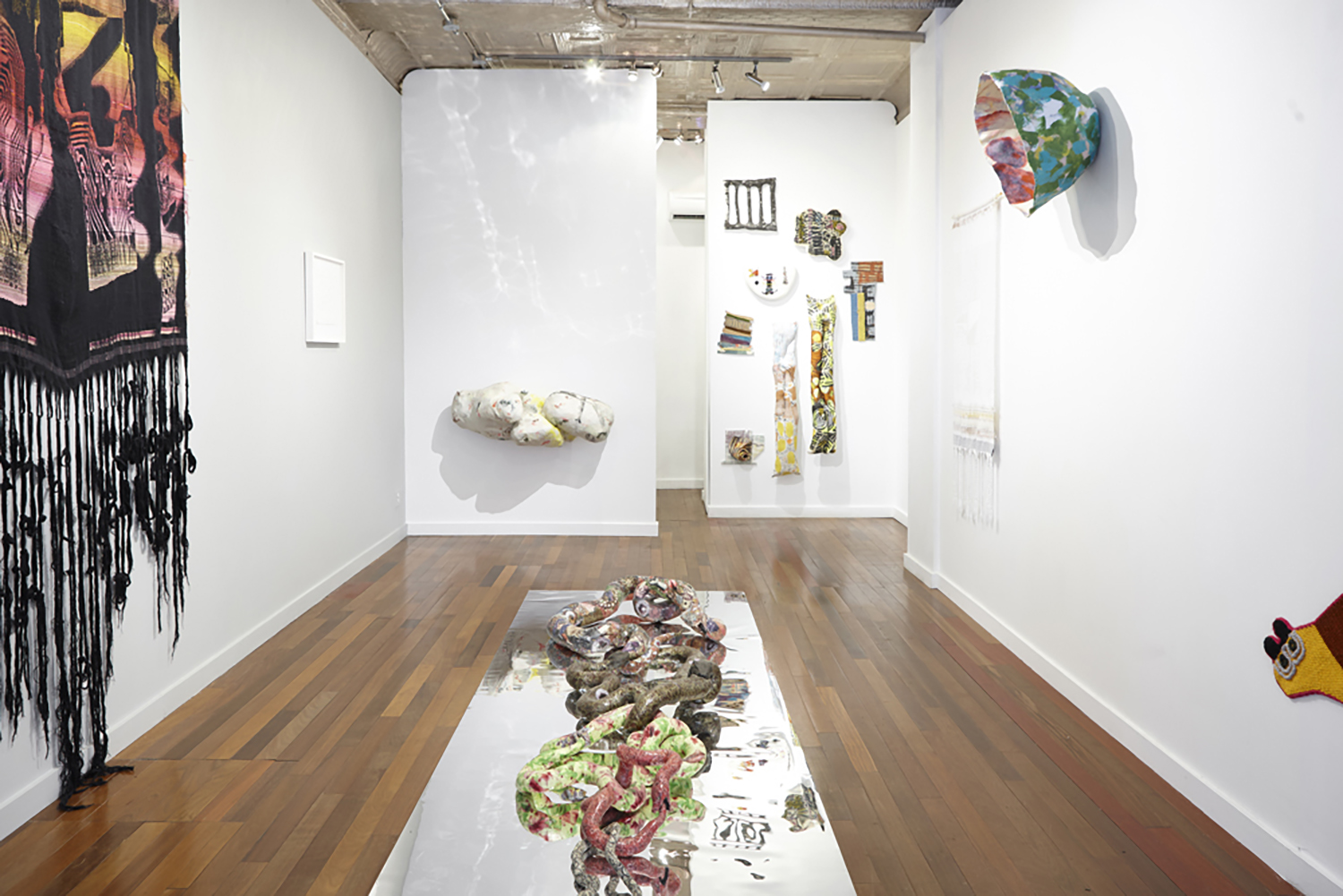
Installation View
Material Myth, 2016
New York, NY
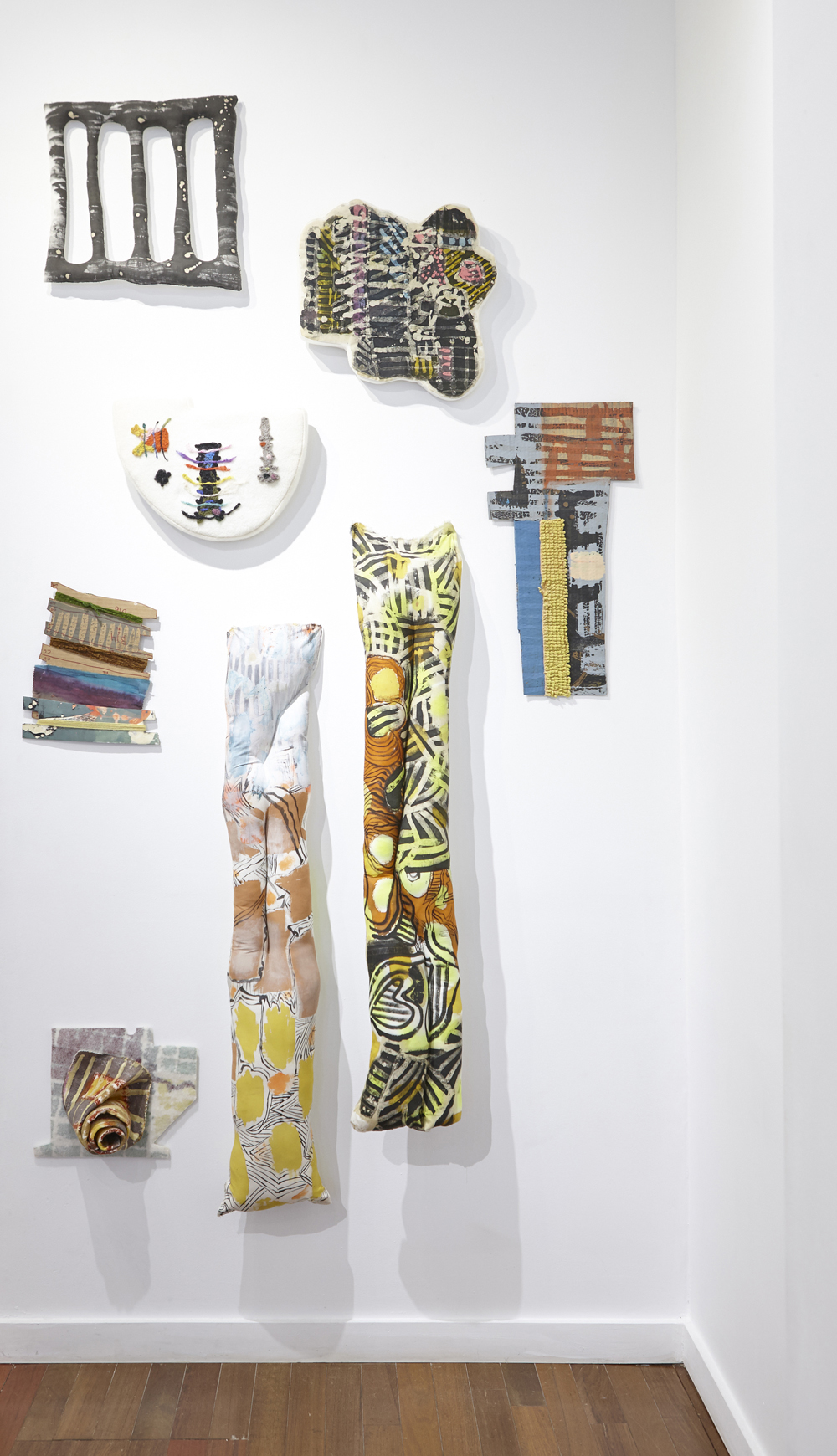
Installation View
Material Myth, 2016
Meg Lipke
New York, NY
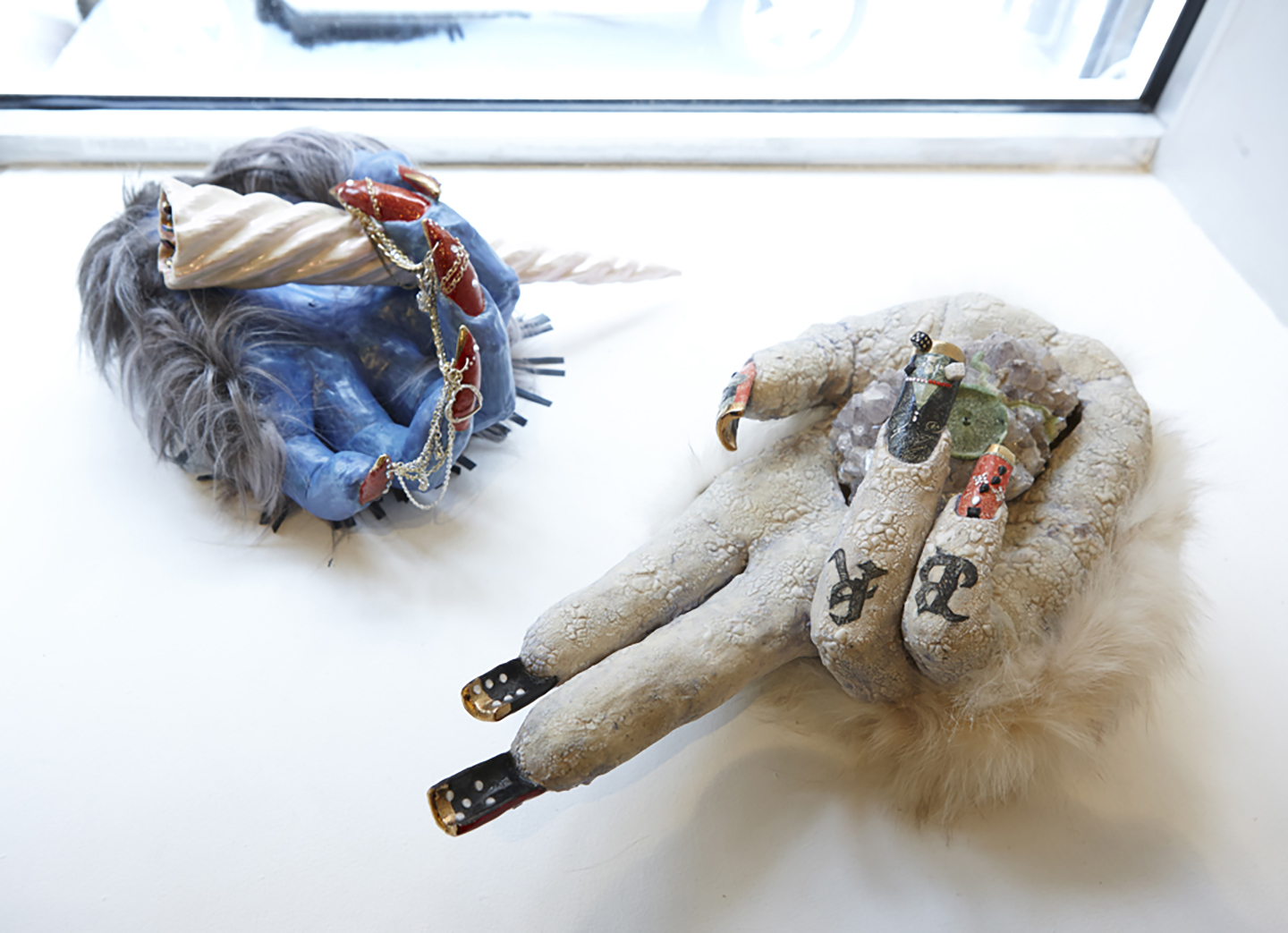
Installation View
Material Myth, 2016
Roxanne Jackson
New York, NY
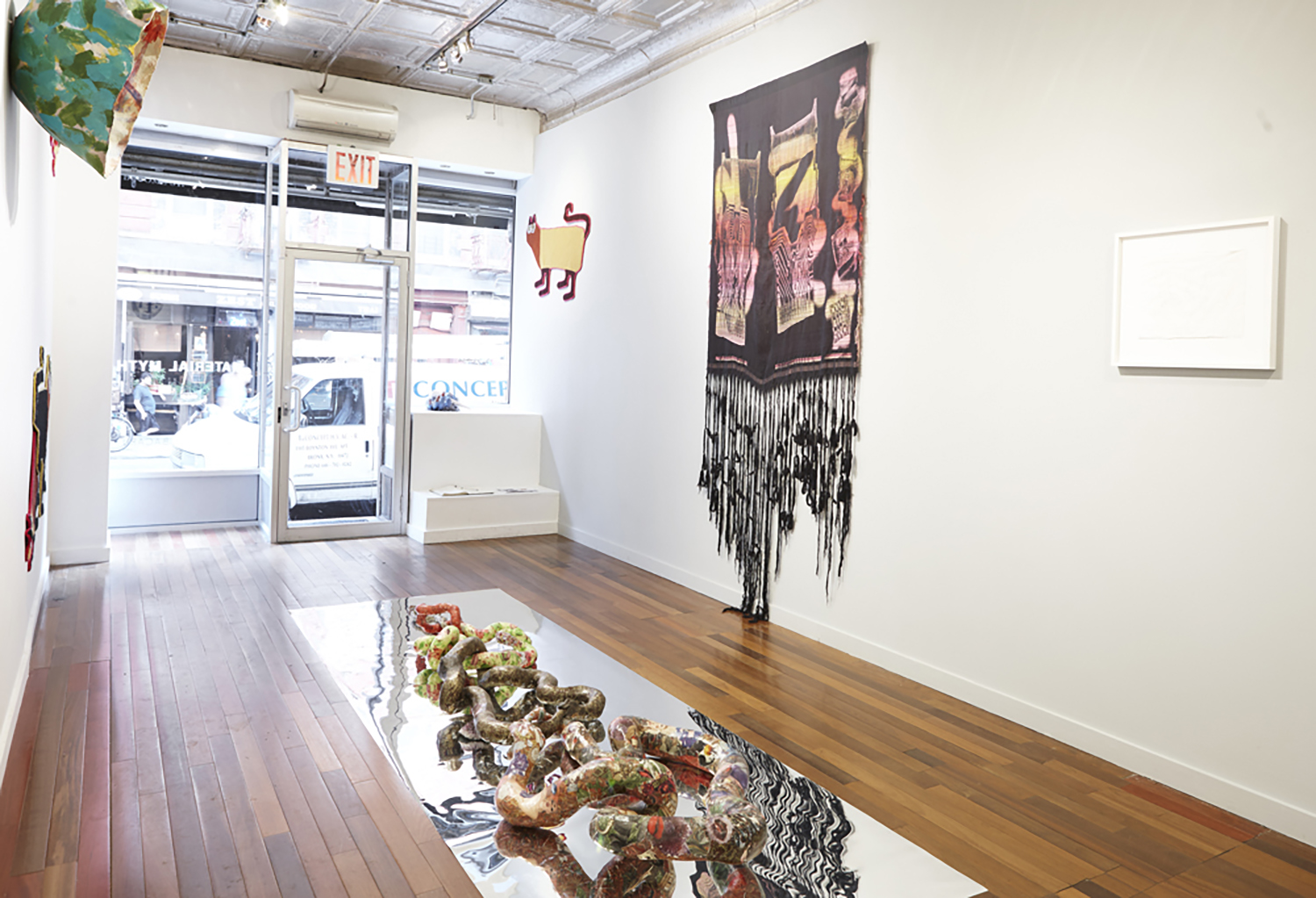
Installation View
Material Myth, 2016
New York, NY
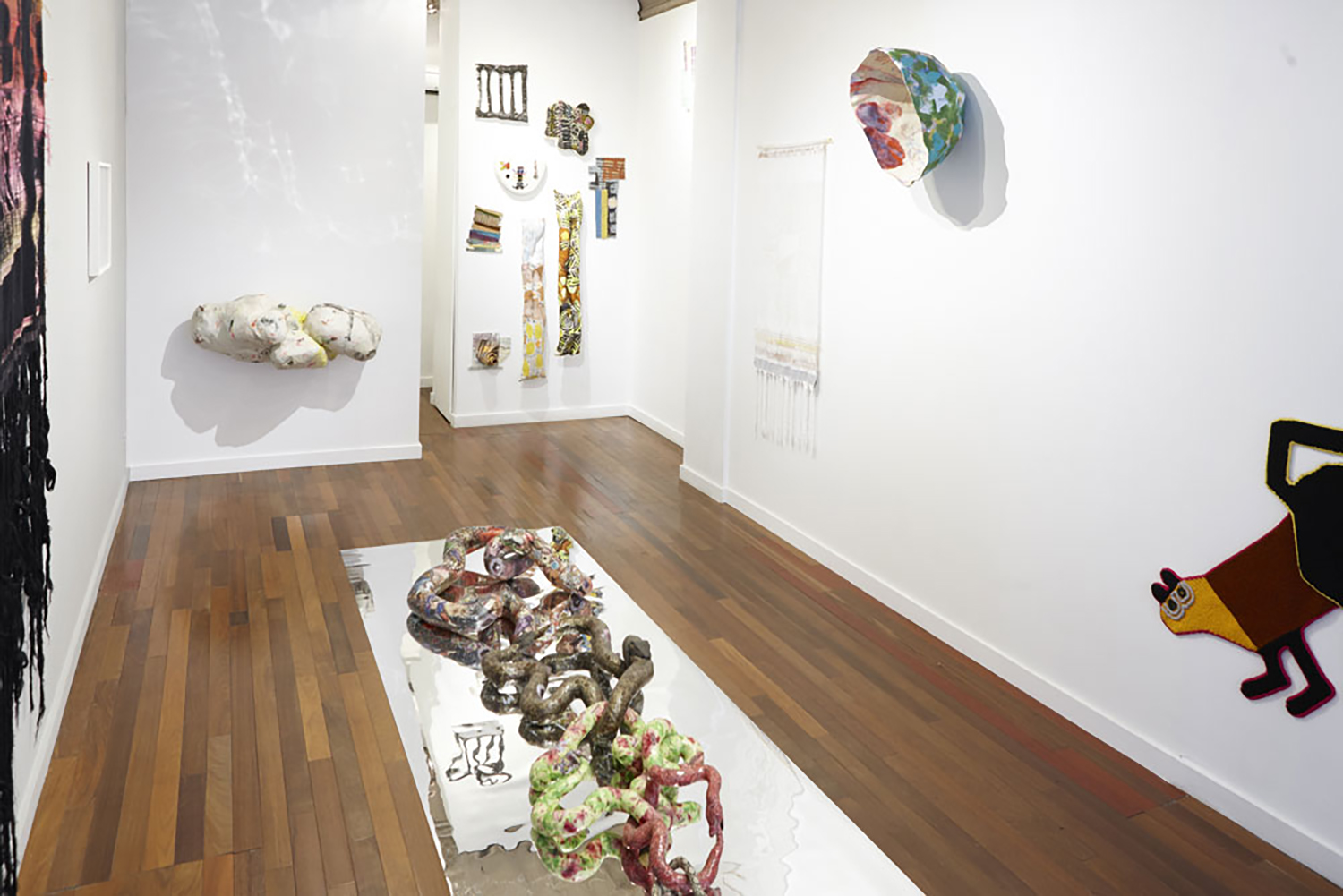
Installation View
Material Myth, 2016
New York, NY
New York, August 5, 2015 – “Craft occupies a key position in this process of continual unveiling.”
Glenn Adamson, Thinking Through Craft
Emerging from a desire to explain the world around us, myth is a figment of what may or may not have been. Fantastical yet familiar, myth has the ability to reveal what is hidden and gives form to the inaccessible. Material exists in the concrete realm and like myth, frames our perspective. When manipulating this tangible, raw substance into something new, some amount of alchemy is involved. The resulting entity loses characteristics of the parts that comprise it and takes on a gestalt of its own, rendering the materials mythical to the casual observer.
This exhibition brings six artists together whose work engages the relationship between myth and materials through processes based in various craft-related techniques. Utilizing the language of materials, these artists subvert and exploit the historical and socio-political associations that their media embodies. Through engaged experimentation, forms emerge from the activity of making. Speaking with the metaphorical qualities and palpable traits of their chosen materials, these artists join conversations with a long line of craft-based arts, sharing appreciation for the raw sensual appeal of these traditions. The approach artists take in Material Myth is very much in alignment with the Neo-Craftivism approach to artmaking, defined as a reinvigoration of Betsy Greer’s term Craftivism: a single word designed to merge craft and social activism, utilizing craft as a subversion. ‘Craft’, with all its connotations, is used as an escape hatch, a means to think outside of the confines of contemporary art making.
Caroline Wells Chandler draws from personal experience, as well as the history of painting and gender politics. In an Ohio Interview with Amy Fusselman, Chandler stated, “The feminist art movement in the seventies really opened things up materially…It also laid down the foundation for identity politics based works in the nineties. I’m interested in body liberation, body language, wordplay, the way text informs and writes the way we navigate in our bodies, and how we use language to empower ourselves…Visually I want to expand language and twist the terms that currently exist. Crocheting as a process involves twisting lines which for me relates to language.”
Tracey Emin was raised in the seaside town of Margate on the English coast. Even though she studied printmaking and painting in college, her media takes many different forms of expression including drawing, photography, video, installation, needlework and sculpture. Regarded as one of Britain’s most significant contemporary artists, Emin is known for her biographical or even exhibitionistic work. However, a closer look at her work reveals an authentic world which makes one consider the reality of others. Tracey Emin stated that “For me, being an artist isn’t just about making nice things or people patting you on your back; it’s some kind of communication, a message.”
The entry point to Rachael Gorchov’s work is the landscape of suburban, semi-public spaces: lawns, ponds, skies and flora, planned and invasive, that surround office and industrial complexes. She paints these elements with varying degrees of specificity, allowing image to collide, dissolve into and be convoluted by gestural abstraction. These three-dimensional forms made of papier-mache that hang on the wall. The elements work in concert to defamiliarize omnipresent, ordinary environments. If you choose to spend time with these works, they will ask you to explore by walking, ducking and tilting your head.
Roxanne Jackson appropriates imagery from myth, horror films, and subculture. She explores a variety of craft-based materials to create work that is blackly humored and macabre. In the journal Eyes Towards the Dove, Sarah Walko wrote that her work generates a “…humorous dialogue between culturally accepted ideas of what is beautiful and what is beastly, what is banal and what is sublime. Her varied subjects compliment her varied mediums…striping a hierarchy of preciousness as they all integrate together creating a discordant tone. This use of materials also conceptually strengthens her critique of the glorification of popular culture as universal mythology.”
The history of connections between the industries of textiles and electronics provides inspiration for the work of Robin Kang. Utilizing a digitally operated Jacquard hand loom, the contemporary version of the first binary operated machine and argued precursor to the first computer, Robin hand weaves tapestries that combine ethnographic symbolism, computer related imagery, and digital mark making. These gestures layered with symbols from ancient weaving traditions and motherboard hardware blend together amid interlocking threads. The juxtaposition of textiles with technology opens an interesting conversation regarding the relationship between textiles, symbols, and language.
Meg Lipke’s recent body of work emerges from her painting practice while exploring objecthood and addressing the theme of reparation in a domestic setting. Her hybrid works draw not only from craft traditions but are also inspired by her family’s history in England’s textile industry. The work conjures ceremonial props that have been removed from context, and nods to the domestic/craft realm through the use of fabric, stuffing, cardboard, yarn and thread. With painterly gestures, she employs a traditional form of the textile application of batik (beeswax and fabric dye) to pattern and construct her compositions.